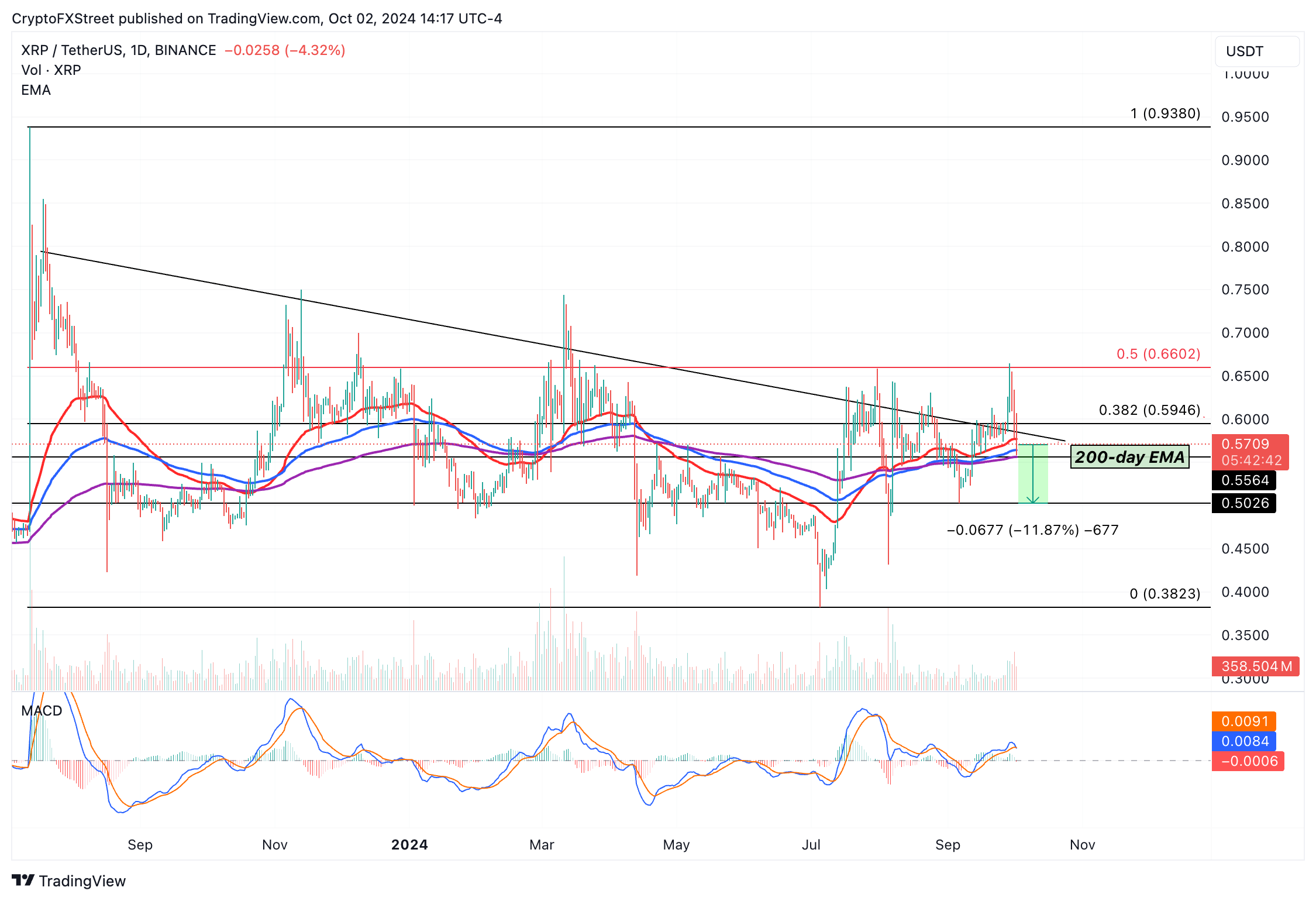XRP dips 3%, traders digest Bitwise’s XRP ETF filing with the SEC

- XRP loses 3% of its value on Wednesday, trading at $0.5881.
- Bitwise files S-1 registration with SEC, confirming its intention to register the first US-based Spot XRP ETF.
- XRP tests support at $0.5946, risks decline to a 50-day EMA at $0.5531.
Ripple (XRP) lost value on Wednesday even as asset management giant Bitwise affirms its intent to register the United States’ first Spot XRP ETF. Bitwise filed its S-1 registration, a crucial step in the process of registering a Spot crypto ETF with the Securities & Exchange Commission (SEC).
Daily Digest Market Movers: Bitwise takes XRP Spot ETF filing process forward on Wednesday
- XRP Spot ETF could debut in the US if asset manager Bitwise receives approval from the US SEC.
- The firm filed its S-1 registration, affirming its intent to launch the first Spot ETF for XRP Ledger’s native asset.
- S-1 filing is an initial registration form, considered a requirement by the regulator for securities that meet the proper criteria in the US. The filing is made before the securities product is approved and then listed on a national stock exchange.
- In an associated press release, Hunter Horsley, Bitwise CEO said,
“At Bitwise, we believe blockchains will usher in new, apolitical monetary assets and permissionless applications for the 21st century. It’s why for the past seven years we’ve helped investors access the opportunities in the space, and we’re excited to continue that work with our filing for a Bitwise XRP ETP.”
- XRP traders are digesting the news of the ETF, while they keep their eyes peeled for developments in the SEC vs. Ripple lawsuit.
- The lawsuit ended in August 2024, with a ruling which was considered a partial victory for both Ripple and the SEC. However, there is a likelihood that the regulator will appeal the ruling. This impacts XRP holders as the asset could lose its legal clarity.
Technical analysis: XRP risks further decline
Ripple’s XRP is in a multi-month downward trend as seen in the XRP/USDT daily chart. The altcoin trades at $0.5709 after testing the $0.5946 support on Wednesday. The Moving Average Convergence Divergence (MACD) indicator shows that the XRP price trend likely has underlying negative momentum as the streak of green histogram bars ends.
The MACD line has crossed under the signal line, another sign of a likely trend reversal. XRP could sweep liquidity at the 200-day Exponential Moving Average (EMA) at $0.5564 and extend its decline by 11.9% to $0.5026, the September 6 low for XRP.

XRP/USDT daily chart
A daily candlestick close above support at $0.5946 could invalidate the bearish thesis. XRP could attempt a rally to $0.6602, the 50% Fibonacci retracement of the decline from the July 2023 top of $0.9380 to the July 2024 low.
Cryptocurrency metrics FAQs
The developer or creator of each cryptocurrency decides on the total number of tokens that can be minted or issued. Only a certain number of these assets can be minted by mining, staking or other mechanisms. This is defined by the algorithm of the underlying blockchain technology. On the other hand, circulating supply can also be decreased via actions such as burning tokens, or mistakenly sending assets to addresses of other incompatible blockchains.
Market capitalization is the result of multiplying the circulating supply of a certain asset by the asset’s current market value.
Trading volume refers to the total number of tokens for a specific asset that has been transacted or exchanged between buyers and sellers within set trading hours, for example, 24 hours. It is used to gauge market sentiment, this metric combines all volumes on centralized exchanges and decentralized exchanges. Increasing trading volume often denotes the demand for a certain asset as more people are buying and selling the cryptocurrency.
Funding rates are a concept designed to encourage traders to take positions and ensure perpetual contract prices match spot markets. It defines a mechanism by exchanges to ensure that future prices and index prices periodic payments regularly converge. When the funding rate is positive, the price of the perpetual contract is higher than the mark price. This means traders who are bullish and have opened long positions pay traders who are in short positions. On the other hand, a negative funding rate means perpetual prices are below the mark price, and hence traders with short positions pay traders who have opened long positions.







